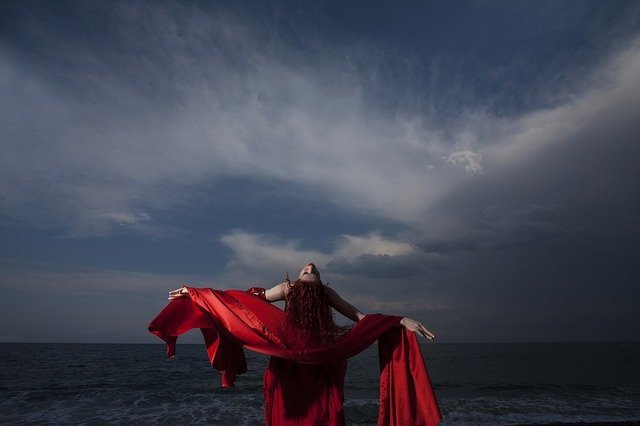
You will hear a lot of information that may be contradictory about taking good photographs. Follow the tactics in this list to help get a well-balance, beautiful photo.
Overcast skies aren’t great for pictures. Too much gray sky showing in a photo makes it appear washed-out and muted. If you cannot exclude the overcast sky from your shots, you may want to consider taking black and white photos. If the sky is blue and beautiful, include it as much as you want, but pay attention to the light.
Using digital software, photos can be altered to look like watercolors, pencil sketches and much more. Adobe Photoshop is widely considered the industry standard for digital images, but there are numerous other companies with adequate programs. It can immediately change photos into artworks by choosing the medium required within the filter option.
Try out new things; experiment, and don’t be afraid in taking new and original pictures. A great photograph should be not only aesthetically pleasing, but should also showcase a personal style. Create unique photos that people have not seen many times before. Instead, shoot from unique angles, and be creative with your compositions.
When taking pictures, avoid overcast skies. Your photo will look washed out if you have too much gray sky in it. If you cannot exclude the overcast sky from your shots, you may want to consider taking black and white photos. A bright, blue sky can create a lovely backdrop as long as you are careful not to overexpose the shot.
Here is a handy photo tip! Shutter speeds can greatly improve your experience with photography. M, S, A, and P settings all exist on your camera. “P” indicates the program setting. This mode will completely automate the shutter and aperture selection process. If you don’t know what you’re shooting, use your “P” setting.
Framing the subject in a photo is very important. Eliminate any objects that diminish the impact of your subject by either removing them or zooming in on your main focal point. This allows for a simple, effective shot that contains only a single focal point.
Snap some shots of your travel souvenirs. For example, photograph the shop where you had originally purchased the memento, or frame the object against a memorable background. This is a great way to capture memories and remember where you might have purchased a certain item from.
Above all else, photography is an art form meant to be enjoyed. Photos should be a way for you to recall past events or times that you can remember and share with your friends and family. Just remember to have fun while taking photos, you will be much happier and want to learn additional skills.
Visit a thrift store to buy a film camera if you would like to test out the older film-based photography. To get an especially nostalgic look, try black and white film. A good choice is film with a 200 ISO rating. When you have the film developed, have it printed on some different kinds of papers.
Take some notes as you are snapping photos. When you are looking through the many photos you have taken, it can be hard to recall the locations in which you took them, or your feelings as you were doing it. Buy a small notebook to write down all your information on the photos. Number your photographs, and write this number down in the notebook next to the description of that photograph.
When shooting a wedding, warm up by taking pictures of small details, like an invitation or a purse. Take a picture of some flowers. Some of these may turn out to be unique shots.
Focus your shot and make sure the subject is off center. Centering can be very expected and therefore not all that interesting to look at in a photo. Off-center your subjects to enhance the appearance of your images and make them more appealing to viewers.
If you plan on diving into landscape photography, you need to ensure that your pictures have three key factors. They need to include a background, foreground, and a mid-ground. These artistic elements are as important to a picture as they are to a painting.
When composing a shot, keep in mind the artistic axiom “less is more.” Why would you want to clutter your shots? Simplicity is an art in itself, so apply this to your photographs.
Are you looking to take images of objects that are wet or have a rained-upon look? Just create a little rain yourself. Carry around a spray bottle, and mist the subjects up a little to get the right effect.
Despite popular thought, white is not a good color choice for clothing when having your photograph taken. Many cameras are pre-set to automatically focus, so the camera seeks a “reading” of all the nuances and shades present in the frame of the picture. The auto-focus feature will cause white clothes to appear grayish.
If you are going to be taking a picture of a large group, give them some suggestions on how to wear complementary clothing. They do not have to match, but the photos will look better if the colors that are worn complement each other. Warm and neutral colors will be most attractive for pictures in natural environments. If your subjects absolutely have to wear bright, bold colors, try to get them to wear at least one item that is black in order to avoid a clash of colors.
Toying with the focus can create a more interesting photograph. You can increase the clarity of the main subject and blur the background by reducing the f-stop number. This is especially good for portraits. The larger your f-stop is it will give you more depth, and this simply means that your whole photograph will be clear and focused. You want to do this when taking landscape photos.
Try to find interesting ways to frame your shots. Instead of using metal and wood frames, make an attempt to use natural framing for the shot. When taking a picture, if you focus hard enough on surrounding elements, you can use it to make “natural frames” around your subject matter. This approach is an easy way to improve your composition.
Do not let a great shot go by because you were too busy adjusting your settings. Conversely, avoid buying cameras that only offer automatic settings, because you will lose the chance to have some creative influence over your shots. Look around and find a setting which lets you change things as you want to.
Make sure to take a lot of practice shots whenever you are shooting in a new setting. Each photograph situation varies, but practicing can help you get a feel for your environment. Lighting can change often, do not be afraid to take more practice shots in between your actual pictures.
Try different angles to make your photographs more unique. Unique angles bring a new dimension into your photography. Try to find fun and interesting angles to approach the scene. First, attempt from higher positions, and then move lower. Other interesting alternatives are framing your subject from a diagonal or sideways view.
Create an interesting silhouette. The easiest technique is to use a sunset, but there are other creative methods. One way to have a silhouette appear is by choosing a background that is much brighter than your subject. You can easily create this effect by having a flash go off behind your subject or even just using a brightly lit window. Always remember that many people consider the outline of their body to be unflattering, so don’t focus on that unless it’s what you’re subject wants.
You will want to use filters which are extensions that you put onto your camera lenses. They typically screw on the lens and offer a number of different effects. The most frequently used filter is a UV filter. This will prevent direct sunlight from damaging your lens. It also protects your lens against physical damage if you accidentally drop your camera.
Your camera can be a fantastic way to get beautiful shots if used correctly. Utilizing a shallow field of depth can help you make the background fuzzy and highlight the focus of your picture.
Any subject can make an interesting photograph, however, for some subjects, in order to make a good photograph, you may need to adjust your camera’s setting, alter the angle which you capture the image from or change the surrounding lighting. Practice these techniques before you shoot your photos so you know what results you’ll get from each.
If you’re shooting fast moving subjects, select camera settings that will clearly show your subject instead of leaving it blurry. Increase your ISO to try this out. This will get you better and clearer shots of faster moving subjects.
Red Eye
You need to make sure you take time and pose your subject. If you start to notice that not a lot of the photos from your family events are turning out like you want them to, it might be because all of your shots are candid, or you caught people by surprise. This will allow you to get the perfect shot.
Red eye in your photos can seem like something so small, but really, you will never frame or share that photo. Red eye can be avoided by staying away from using the flash, or having your subject look away from the camera if flash is a necessity. Many new cameras come equipped with a red eye reduction capability.
Crop your pictures strategically. Your photograph may be perfect except for that pile of dirty clothes in the background. Maybe the subject is slightly unbalanced or off center. You can easily fix those through cropping the image later.
The investment of a basic tripod will allow you to capture better quality pictures. Movements from your hands holding the camera can be noticeable whenever your shutter speed is low. An inexpensive tripod can really help you to take a steady shot, that will come out crisp and clear. A steady tripod will add stability to your frames and give your work a professional touch.
Low light makes for tricky photography conditions due to the increased blurriness it causes. A steady hand is crucial to getting a good low light shot. You may even want to rest them on something as you take a picture. The ideal solution to this circumstance is the use of a tripod.
You don’t always have to take pictures horizontally. Sometimes, the most striking photographs come when you turn the camera to capture a vertical shot. Use your zoom feature to capture your object correctly.
Experiment with your flash until you have a good feel for its range. Otherwise, your pictures will be too dark to view. Use your flash and get to know it before you begin taking dark pictures.
The tips that you read about in this article are some of the best things to consider when taking a picture. Having read this article, you are now better prepared to start taking some photographs of your own, or to improve the quality of the shots you take.
Photography is a great thing to share with your children. Let your kids play with an older camera to see if you can generate a lasting interest in this rewarding hobby. Sharing pictures can help remind you of great memories, and tell better stories.


